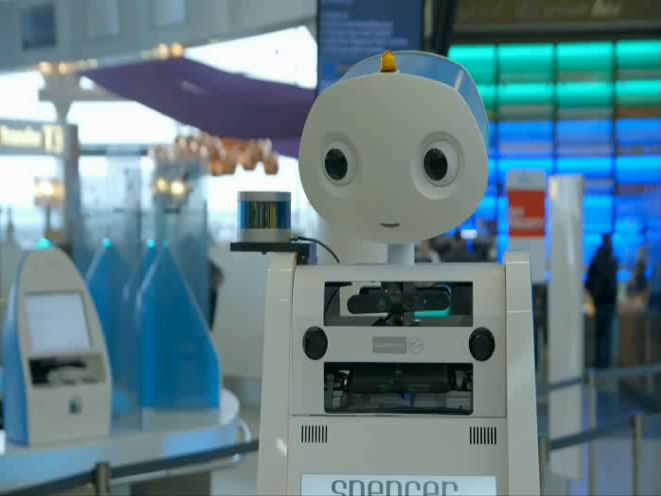Robots and off-airport processing may be the future of air travel as China becomes the world’s biggest aviation market and airline passenger numbers double by 2036.
The peak bodies representing airports and airlines are joining forces to examine ways they can move check-in and security processes away from airport sites as well as better use advanced tracking and robots.
The move is part of a new initiative called New Experience in Travel and Technologies (NEXTT) and comes amid worries the industry will struggle to cope with a projected doubling of air traffic over the next two decades.
The International Air Transport Association and the Airports Council International hope they can develop new on-ground technology to cope with the increase.
The move is also likely to be welcomed by passengers with a new survey showing many want to use technology to take greater control of their journey.
IATA is predicting the number of passengers will soar from 4 billion to 7.8 billion by 2036, based on a 3.6 per cent compound annual growth rate.
The Asia-Pacific region will be the biggest driver of demand and the source of more than half the new passengers over the next two decades.
China is expected to displace the US as the world’s biggest aviation market in 2022 through a combination of slightly faster Chinese growth and slightly reduced growth in the US.
The UK will fall to fifth place, surpassed by India in 2025, and Indonesia in 2030. Thailand and Turkey will enter the top ten largest markets, while France and Italy will fall in the rankings to 11th and 12th respectively.
The airline and passenger organisations hope NEXTT will develop ways of improving the on-ground transport experience, guide industry investments and help governments improve the regulatory framework.
“We will not be able to handle the growth or evolving customer expectations with our current processes, installations and ways of doing business,’’ IATA director general Alexandre de Juniac said in announcing the collaboration.
“And accommodating growth with ever bigger airports will be increasingly difficult if not impossible.”
ACI World director general Angela Gittens said NEXTT would explore increased off-site processing options that would reduce or even eliminate queues.
It would also look at better use of space, enhanced deployments of artificial intelligence and robotics as well as vastly improving data sharing between stakeholders.
“The goal of NEXTT is finding potential ways to integrate systems and improve operations in the most secure, effective and sustainable manner for the benefit of passengers and the industry,” Gittens said.
In addition to passengers, the project will look at how cargo and baggage move through a complete journey.
IATA and ACI will work with their respective members, and other associations, service providers, engineering firms and manufacturers.
They said several were already involved in projects exploring NEXTT concepts, including Amsterdam Airport Schiphol (AMS), Bangalore International Airport (BLR), Dubai International (DXB), Heathrow Airport (LHR) and Shenzhen Airport (Group) Co., Ltd. (SZX).
























